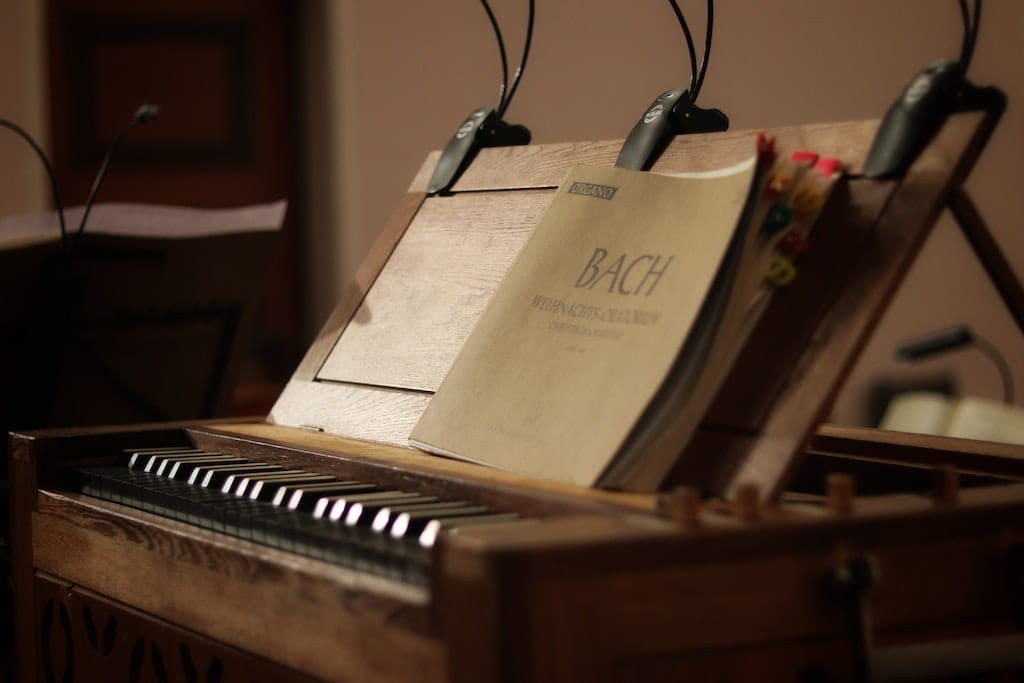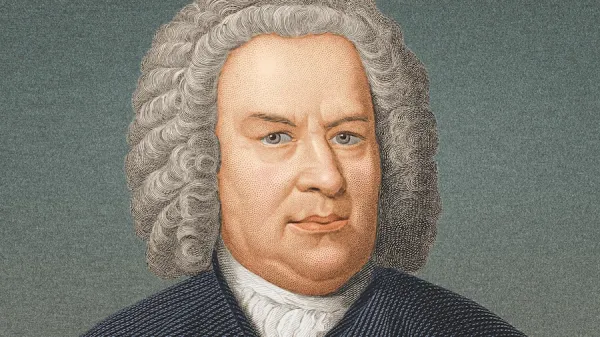Harmonic Complexity Unveiled: Understanding the Significance of Counterpoint in Classical Compositions

In the vast realm of classical music, there are many elements and techniques that contribute to its timeless beauty and complexity. One such fundamental aspect is counterpoint. Counterpoint plays a crucial role in classical music composition, giving rise to intricate harmonies and captivating melodies that have stood the test of time.
The purpose of this guide is to delve into the world of counterpoint, exploring its definition, historical significance, and its impact on the development of classical music. Whether you are a music enthusiast, a composer, or simply curious about the inner workings of this rich musical tradition, this exploration of counterpoint will deepen your understanding and appreciation of classical music.
Historical Context
To understand counterpoint, we must first trace its origins and development throughout different musical periods. Counterpoint can be traced back to ancient Greek music, but it truly flourished during the Medieval and Renaissance eras. During the Renaissance, composers such as Josquin des Prez and Palestrina established the foundations of counterpoint, setting the stage for its evolution.
The Baroque period witnessed the pinnacle of contrapuntal mastery, most notably in the works of Johann Sebastian Bach. Bach’s fugues and chorales exemplify the highest level of counterpoint, showcasing intricate interweaving melodies and harmonies. The Classical era, with composers like Mozart and Haydn, introduced a more balanced approach to counterpoint, combining it with structural clarity and elegant simplicity.
Counterpoint continued to evolve throughout the Romantic period, with composers such as Beethoven incorporating it into symphonic compositions, creating a harmonious blend of emotions and technical virtuosity. Even in modern times, composers like Stravinsky and Hindemith demonstrated the lasting influence of counterpoint in their works.
Understanding Counterpoint
At its core, counterpoint refers to the art of combining multiple independent melodic lines to create a harmonically rich and cohesive musical texture. It is a delicate balancing act, requiring careful attention to melodic independence, voice leading, and the adherence to harmonic rules.
Contrapuntal techniques encompass various principles, including the careful arrangement of voices to create pleasing harmonies, the use of melodic intervals to enhance the overall musical expression, and the intricate interplay between voices to achieve a sense of unity and complexity.
The concept of voice leading is paramount in counterpoint. It involves the smooth and logical movement of individual melodic lines, ensuring that each voice moves independently yet harmonically in relation to others. By observing the principles of voice leading, composers can create a seamless and expressive musical fabric.
Counterpoint manifests in different textures, ranging from imitative counterpoint, where melodic ideas are echoed and imitated among voices, to invertible counterpoint, where the melodic lines can be played in reverse, resulting in a mirrored yet coherent composition. Free counterpoint, on the other hand, allows composers greater freedom in the arrangement and development of melodic lines.
Counterpoint in Practice
In this section, we will delve into the practical application of counterpoint by exploring famous compositions and analyzing the various types of counterpoint employed by renowned classical composers.
A. Bach’s Fugues and Chorales
Johann Sebastian Bach, a master of counterpoint, left an indelible mark on the genre with his fugues and chorales. Fugues are intricate contrapuntal compositions characterized by the exposition of a main theme, or subject, which is then developed and interwoven among multiple voices. Bach’s “The Well-Tempered Clavier” is a prime example of his mastery of fugues, with each prelude and fugue showcasing his ingenious use of counterpoint to create complex and harmonically rich musical tapestries.
Bach’s chorales, on the other hand, highlight his skill in crafting four-part harmony while maintaining melodic independence. These hymn-like compositions feature intertwining melodies sung by different voices, creating a lush and harmonically vibrant texture. Bach’s chorales, such as “Wachet auf, ruft uns die Stimme” (Sleepers, Wake), epitomize the beauty and elegance of contrapuntal writing.
B. Palestrina’s Sacred Choral Works
Giovanni Pierluigi da Palestrina, an influential composer of the Renaissance period, is renowned for his sacred choral compositions. His works exemplify the ideals of Renaissance counterpoint, characterized by smooth voice leading, clear melodic lines, and a focus on textural clarity. Palestrina’s Mass settings, motets, and madrigals showcase his masterful command of counterpoint, creating ethereal and transcendent musical experiences.
C. Mozart’s Contrapuntal Compositions
Wolfgang Amadeus Mozart, known for his extraordinary musical genius, demonstrated his prowess in counterpoint through various compositions. His contrapuntal writing is evident in his instrumental works, such as the fugues in his “Adagio and Fugue in C minor” and the intricate counterpoint found in his string quartets. Mozart seamlessly blends melodic independence and harmonic complexity, creating compositions that are both intellectually stimulating and emotionally captivating.
D. Beethoven’s Use of Counterpoint in Symphonies
Ludwig van Beethoven, a transformative figure in classical music, expanded the boundaries of counterpoint in his symphonies. Beethoven’s symphonic works feature contrapuntal elements woven into the fabric of grand orchestral textures. The contrapuntal sections in his symphonies, like the fugue in the finale of his Symphony No. 5, add layers of complexity and intensity, showcasing his innovative approach to counterpoint within the symphonic genre.
By examining these exemplary works, we gain insight into the diverse manifestations of counterpoint and how it contributes to the depth and richness of classical compositions. These examples represent just a fraction of the immense repertoire of counterpoint in classical music, and they serve as a starting point for further exploration.
Principles of Counterpoint
In this section, we will explore the principles and rules that govern counterpoint, shedding light on the harmonic and melodic guidelines that composers employ to create harmoniously balanced compositions.
A. Harmonic and Melodic Rules
Counterpoint relies on a set of principles that guide the interaction between multiple melodic lines. These principles ensure that the combination of voices creates a harmonically pleasing and structurally coherent composition.
- Consonance and Dissonance: Counterpoint balances consonance (harmonically pleasing intervals) and dissonance (tense or unresolved intervals) to create tension and resolution. Composers carefully select intervals and progressions to achieve a harmonically satisfying result.
- Voice Leading: The smooth and logical movement of individual melodic lines, known as voice leading, is crucial in counterpoint. Composers strive for stepwise motion, avoiding large leaps, to create a sense of coherence and fluidity.
- Avoiding Parallel and Hidden Fifths and Octaves: Parallel motion of fifths and octaves between voices can lead to a loss of independence and harmonic richness. Composers adhere to the rule of avoiding these parallels to maintain individuality and clarity in the melodic lines.
- Intervallic Balance: Counterpoint seeks to achieve an appropriate balance of intervals between voices. Too many leaps or a lack of stepwise motion can disrupt the flow and coherence of the composition. Composers employ a mixture of leaps and steps to create a compelling melodic journey.
B. Contrapuntal Textures
Counterpoint can manifest in various contrapuntal textures, each with its own unique characteristics and requirements.
- Imitative Counterpoint: This texture involves the repetition and imitation of a melodic idea among different voices. It creates a sense of dialogue and interplay as the melodic idea is passed from one voice to another.
- Invertible Counterpoint: Invertible counterpoint refers to the compositional technique where melodic lines can be played in reverse or inverted, resulting in a mirrored yet coherent composition. This technique showcases the versatility and complexity of counterpoint.
- Free Counterpoint: Free counterpoint allows composers greater freedom in the arrangement and development of melodic lines. While still adhering to certain rules and principles, composers have more flexibility in shaping the interplay between voices.
By following these principles and exploring different textures, composers create intricate and captivating counterpoint in their compositions.
Analysis of Counterpoint Examples
In this section, we will analyze specific compositions to gain a deeper understanding of counterpoint and explore different types of contrapuntal techniques employed by renowned classical composers.
A. Canons and Rounds
Canons are compositions in which a melodic line is imitated by one or more voices after a certain interval of time. They require strict adherence to the melodic structure and harmonic progression, creating a sense of intricate unity. A famous example of a canon is Johann Pachelbel’s “Canon in D,” in which three voices repeat and imitate the main theme in a mesmerizing and harmonically satisfying manner.
Rounds are a specific type of canon in which each voice starts at different times but sings the same melody. Rounds, like the popular song “Row, Row, Row Your Boat,” demonstrate the playful and engaging nature of canonic writing.
B. Fugues
Fugues are complex contrapuntal compositions characterized by their polyphonic texture and the development of a main theme, or subject. Composers carefully interweave different voices, each entering with the same subject but at different intervals. Bach’s “Fugue in G minor” from “The Well-Tempered Clavier” showcases the intricate interplay of voices, the precise entry of the subject, and the elaborate development of the musical material. Fugues require meticulous attention to voice leading and harmonic progression, creating a harmonically rich and intellectually stimulating musical experience.
C. Double and Triple Counterpoint
Double counterpoint involves composing two independent melodic lines that can be played either in their original form or in inversion, resulting in a harmonically coherent composition. The composer must carefully consider both the melodic and harmonic implications of the two lines. An example of double counterpoint can be found in Bach’s “The Art of Fugue,” where the melodic lines can be played in their original form or inverted without compromising the overall harmonic structure.
Triple counterpoint takes the concept further by adding a third voice that can also be inverted while maintaining harmonic integrity. Triple counterpoint adds an additional layer of complexity and compositional skill. Mozart’s “Sinfonia Concertante for Violin, Viola, and Orchestra” showcases his command of triple counterpoint, with the three voices intertwining and harmonizing in a masterful display of contrapuntal writing.
By analyzing these examples, we can appreciate the intricate structures and harmonic interplay that counterpoint offers in classical music. These compositions showcase the skill and creativity of the composers in utilizing different contrapuntal techniques to create rich and engaging musical experiences.
Counterpoint’s Influence and Legacy
Counterpoint has left an indelible mark on classical music and continues to influence composers across different eras and styles. In the Romantic period, composers like Brahms and Mahler incorporated elements of counterpoint into their symphonies, infusing their works with intricate textures and contrapuntal complexity. In the 20th century, composers such as Stravinsky and Hindemith embraced counterpoint in their compositions, exploring new possibilities while paying homage to the tradition.
Counterpoint’s influence extends beyond classical music, with its principles and techniques finding their way into other genres and styles. Contemporary composers continue to draw inspiration from counterpoint, creating innovative and compelling works that blend tradition with modern sensibilities.
Conclusion
Counterpoint is a cornerstone of classical music, showcasing the intricate interplay of melodic lines and harmonies. Through canons, fugues, and other contrapuntal techniques, composers have crafted timeless compositions that continue to captivate audiences. By understanding the principles and analyzing the works of great composers, we deepen our appreciation for counterpoint’s role in shaping classical music’s evolution. Whether it is Bach’s fugues, Palestrina’s choral works, or Mozart’s contrapuntal compositions, each composer’s unique approach to counterpoint enriches the musical landscape and demonstrates the beauty and complexity of this technique.
Counterpoint’s legacy extends beyond classical music, as its influence can be heard in various genres and styles. From jazz improvisation to modern film scoring, elements of counterpoint find their way into contemporary music, showcasing the lasting relevance of this timeless technique. As we conclude our exploration of counterpoint, we invite you to delve deeper into the world of classical music and discover the intricacies of different contrapuntal compositions. Whether you’re a composer, musician, or simply a lover of classical music, understanding counterpoint allows you to appreciate the craftsmanship and genius behind the compositions that have stood the test of time.





